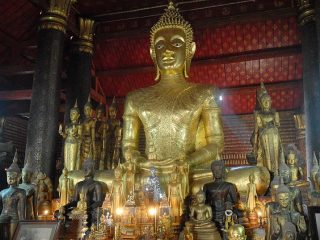When you think of Bali you picture Indonesia. With its turquoise waters, emerald landscapes and sandy beaches, the island of Bali is termed many things from “Island of gods’ to “Paradise Island” to ‘the Underwater Jewel of Southeast Asia’. Located in between two oceans, Bali has one of the richest marine lives with over 2200 species of fish and a huge diversity of marine life that extends to boast 80 types of corral genera. Bali is also famous for its hospitality and cuisine. The people of this island are warm and friendly and those of you who are new and foreign to Bali will feel at home almost instantly. Cuisine of Bali is a whole other topic and simply saying it is good is an understatement, for each and every morsel is a mouth-wateringly exquisite experience. On top of its incredible beaches, friendly people and superb cuisine, Bali is also notorious for its volcanoes.
Bali has two volcanoes that have been playing a significant role in the distinction of Bali. They are called the Batur volcano and the Agung volcano. Located on the eastern part and the highest point of Bali one can find the Agung volcano, which is still active. Its last recorded eruption was in the 1963 and today what remains is a very deep crater that emanates smoke and ash. This stratovolcano influences the climate in a significant way for it contributes to the maintaining of a lush green west.
North West of Agung volcano is the Batur volcano which is the most active of all volcanoes in Indonesia and is one of the greatest tourist attractions. Shaped as a cone amidst the sceneric beauty of the caldera and the mesmerising lake, Batur volcano is one of the most sought after tourist destinations in Bali. It is an active volcano that has been dated back in history for approximately 28, 500 years. To the south east of Mount Batur one can find the scientifically fascinating Caldera Lake. This cauldron shaped formation is a reult of a volcanic eruption and is fascinating and worth the exploration.
The history of Mount Batur records several explosions ranging between mild eruptions to somewhat moderate outbreaks followed by lava emissions. Since its first historically acknowledged eruption in the 1804, the Batur Volcano has been active since then.
 A visit to Bali promises a plethora of activities to choose from where no two days will be the same. With places to visit and many things to do, there is never a day of boredom in this part of the world. Discover and experience for yourself the amazing Indonesian hospitality at an Ubud hotel. Uma Hotel is an exemplary recommendation of a luxury hotel Bali complete with contemporary facilities blended with traditional architecture and set back.
A visit to Bali promises a plethora of activities to choose from where no two days will be the same. With places to visit and many things to do, there is never a day of boredom in this part of the world. Discover and experience for yourself the amazing Indonesian hospitality at an Ubud hotel. Uma Hotel is an exemplary recommendation of a luxury hotel Bali complete with contemporary facilities blended with traditional architecture and set back. 


